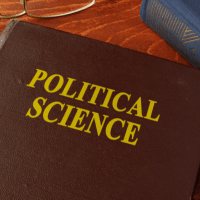Humanities/Arts Exam > Humanities/Arts Questions > The French Canadian rebellion occurred in the...
Start Learning for Free
The French Canadian rebellion occurred in the year:
- a)1837
- b)1838
- c)1839
- d)1840
Correct answer is option 'A'. Can you explain this answer?
Verified Answer
The French Canadian rebellion occurred in the year:a)1837b)1838c)1839d...
The Rebellions of 1837 took place in both Upper and Lower Canada. In Lower Canada, the rebellion was, in large part, an expression of a resurgent French Canadian Nationalism. The French Canadian majority constituted the overwhelming majority in the locally elected Assembly, established by the Canada or Constitutional Act, 1791.
Most Upvoted Answer
The French Canadian rebellion occurred in the year:a)1837b)1838c)1839d...
The French Canadian rebellion, also known as the Lower Canada Rebellion, occurred in the year 1837. It was a significant event in Canadian history, as it marked a period of political and social unrest in the province of Lower Canada (present-day Quebec).
Causes of the Rebellion:
1. POLITICAL TENSIONS:
- The rebellion was primarily fueled by political tensions between the French-speaking majority and the English-speaking minority in Lower Canada.
- The French Canadians felt marginalized and excluded from political power, as the British colonial government, dominated by English-speaking elites, held most of the decision-making authority.
2. ECONOMIC HARDSHIPS:
- Lower Canada was also facing economic hardships during this time, with a struggling agricultural sector and high levels of poverty among the French Canadian population.
- The economic disparities further fueled the discontent and frustration of the French Canadians.
3. INFLUENCE OF THE AMERICAN REVOLUTION:
- The rebellion was also influenced by the ideas of the American Revolution and the French Revolution, which emphasized the principles of liberty, equality, and self-determination.
- French Canadian radicals were inspired by these ideas and sought to overthrow the colonial government in order to establish a more democratic and representative system.
Events of the Rebellion:
1. FIRST REBELLION (1837):
- In 1837, a group of French Canadian rebels, led by Louis-Joseph Papineau, organized armed uprisings against the British colonial government.
- The rebels aimed to establish a new government that would grant political rights and representation to the French Canadian population.
2. RESPONSE OF THE BRITISH GOVERNMENT:
- The British government responded to the rebellion by dispatching military forces to suppress the uprising.
- The rebels were ultimately defeated, and their leaders, including Papineau, fled to the United States.
3. SECOND REBELLION (1838):
- The rebellion continued in 1838 when a new group of rebels, known as the Hunter Patriots, launched a second armed uprising.
- However, the second rebellion was also crushed by the British forces, and many rebels were captured and executed.
Consequences of the Rebellion:
1. THE UNION OF UPPER AND LOWER CANADA:
- As a result of the rebellion, the British government decided to merge Upper Canada (present-day Ontario) and Lower Canada into a single province called the Province of Canada in 1840.
2. THE ACT OF UNION (1840):
- The Act of Union, passed in 1840, abolished the existing political institutions in both Upper and Lower Canada and established a new legislative assembly.
- The Act aimed to assimilate the French Canadians into the English-speaking majority and diminish their political influence.
3. LONG-TERM IMPACT:
- The French Canadian rebellion served as a catalyst for political reforms in Canada and contributed to the growth of French Canadian nationalism.
- It also highlighted the deep divisions between the French and English-speaking populations, which continue to shape Canadian politics and identity to this day.
Causes of the Rebellion:
1. POLITICAL TENSIONS:
- The rebellion was primarily fueled by political tensions between the French-speaking majority and the English-speaking minority in Lower Canada.
- The French Canadians felt marginalized and excluded from political power, as the British colonial government, dominated by English-speaking elites, held most of the decision-making authority.
2. ECONOMIC HARDSHIPS:
- Lower Canada was also facing economic hardships during this time, with a struggling agricultural sector and high levels of poverty among the French Canadian population.
- The economic disparities further fueled the discontent and frustration of the French Canadians.
3. INFLUENCE OF THE AMERICAN REVOLUTION:
- The rebellion was also influenced by the ideas of the American Revolution and the French Revolution, which emphasized the principles of liberty, equality, and self-determination.
- French Canadian radicals were inspired by these ideas and sought to overthrow the colonial government in order to establish a more democratic and representative system.
Events of the Rebellion:
1. FIRST REBELLION (1837):
- In 1837, a group of French Canadian rebels, led by Louis-Joseph Papineau, organized armed uprisings against the British colonial government.
- The rebels aimed to establish a new government that would grant political rights and representation to the French Canadian population.
2. RESPONSE OF THE BRITISH GOVERNMENT:
- The British government responded to the rebellion by dispatching military forces to suppress the uprising.
- The rebels were ultimately defeated, and their leaders, including Papineau, fled to the United States.
3. SECOND REBELLION (1838):
- The rebellion continued in 1838 when a new group of rebels, known as the Hunter Patriots, launched a second armed uprising.
- However, the second rebellion was also crushed by the British forces, and many rebels were captured and executed.
Consequences of the Rebellion:
1. THE UNION OF UPPER AND LOWER CANADA:
- As a result of the rebellion, the British government decided to merge Upper Canada (present-day Ontario) and Lower Canada into a single province called the Province of Canada in 1840.
2. THE ACT OF UNION (1840):
- The Act of Union, passed in 1840, abolished the existing political institutions in both Upper and Lower Canada and established a new legislative assembly.
- The Act aimed to assimilate the French Canadians into the English-speaking majority and diminish their political influence.
3. LONG-TERM IMPACT:
- The French Canadian rebellion served as a catalyst for political reforms in Canada and contributed to the growth of French Canadian nationalism.
- It also highlighted the deep divisions between the French and English-speaking populations, which continue to shape Canadian politics and identity to this day.

|
Explore Courses for Humanities/Arts exam
|

|
Question Description
The French Canadian rebellion occurred in the year:a)1837b)1838c)1839d)1840Correct answer is option 'A'. Can you explain this answer? for Humanities/Arts 2025 is part of Humanities/Arts preparation. The Question and answers have been prepared according to the Humanities/Arts exam syllabus. Information about The French Canadian rebellion occurred in the year:a)1837b)1838c)1839d)1840Correct answer is option 'A'. Can you explain this answer? covers all topics & solutions for Humanities/Arts 2025 Exam. Find important definitions, questions, meanings, examples, exercises and tests below for The French Canadian rebellion occurred in the year:a)1837b)1838c)1839d)1840Correct answer is option 'A'. Can you explain this answer?.
The French Canadian rebellion occurred in the year:a)1837b)1838c)1839d)1840Correct answer is option 'A'. Can you explain this answer? for Humanities/Arts 2025 is part of Humanities/Arts preparation. The Question and answers have been prepared according to the Humanities/Arts exam syllabus. Information about The French Canadian rebellion occurred in the year:a)1837b)1838c)1839d)1840Correct answer is option 'A'. Can you explain this answer? covers all topics & solutions for Humanities/Arts 2025 Exam. Find important definitions, questions, meanings, examples, exercises and tests below for The French Canadian rebellion occurred in the year:a)1837b)1838c)1839d)1840Correct answer is option 'A'. Can you explain this answer?.
Solutions for The French Canadian rebellion occurred in the year:a)1837b)1838c)1839d)1840Correct answer is option 'A'. Can you explain this answer? in English & in Hindi are available as part of our courses for Humanities/Arts.
Download more important topics, notes, lectures and mock test series for Humanities/Arts Exam by signing up for free.
Here you can find the meaning of The French Canadian rebellion occurred in the year:a)1837b)1838c)1839d)1840Correct answer is option 'A'. Can you explain this answer? defined & explained in the simplest way possible. Besides giving the explanation of
The French Canadian rebellion occurred in the year:a)1837b)1838c)1839d)1840Correct answer is option 'A'. Can you explain this answer?, a detailed solution for The French Canadian rebellion occurred in the year:a)1837b)1838c)1839d)1840Correct answer is option 'A'. Can you explain this answer? has been provided alongside types of The French Canadian rebellion occurred in the year:a)1837b)1838c)1839d)1840Correct answer is option 'A'. Can you explain this answer? theory, EduRev gives you an
ample number of questions to practice The French Canadian rebellion occurred in the year:a)1837b)1838c)1839d)1840Correct answer is option 'A'. Can you explain this answer? tests, examples and also practice Humanities/Arts tests.

|
Explore Courses for Humanities/Arts exam
|

|
Signup for Free!
Signup to see your scores go up within 7 days! Learn & Practice with 1000+ FREE Notes, Videos & Tests.























